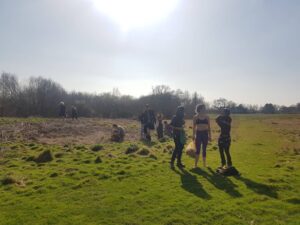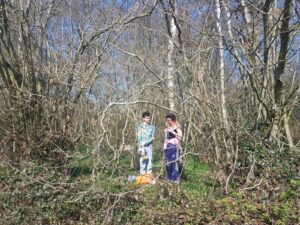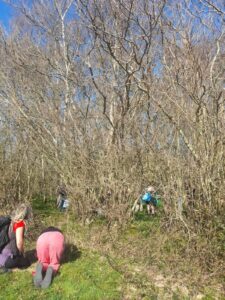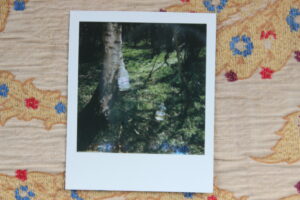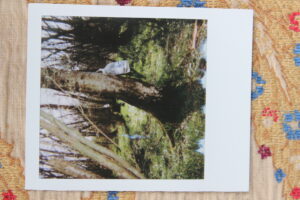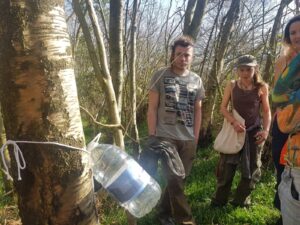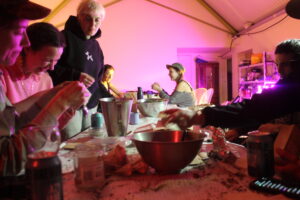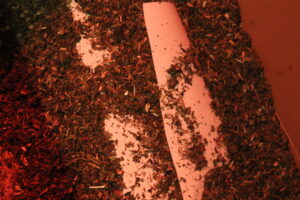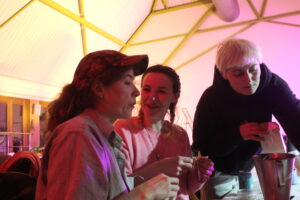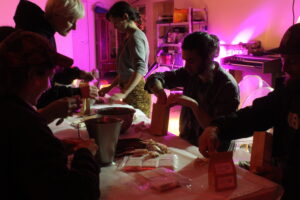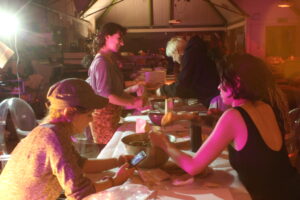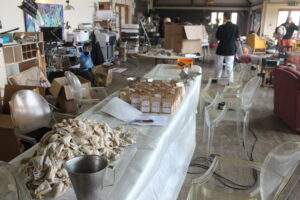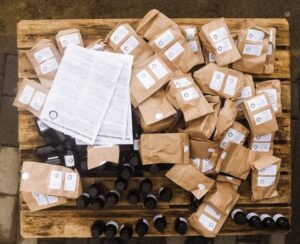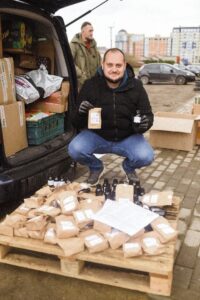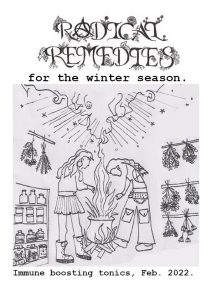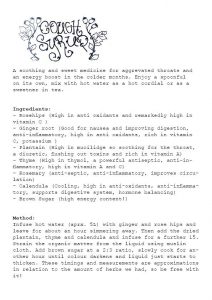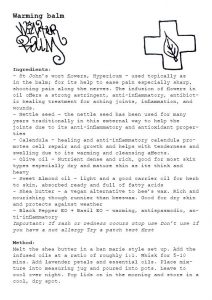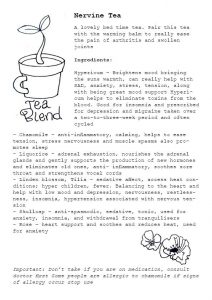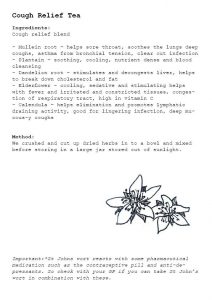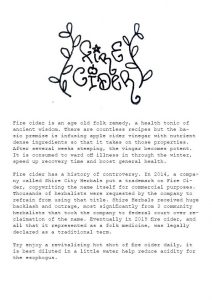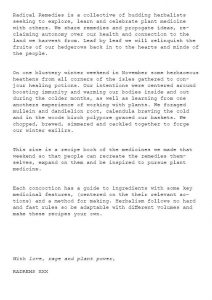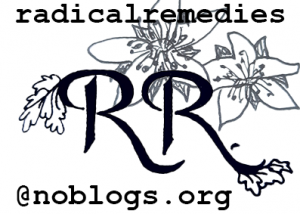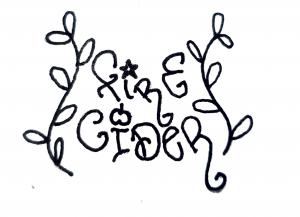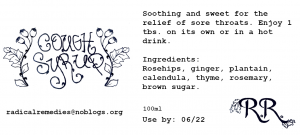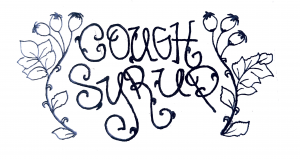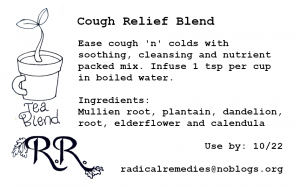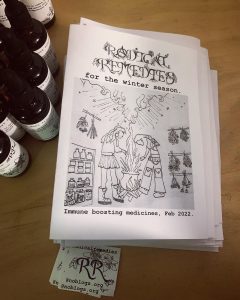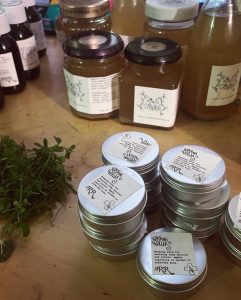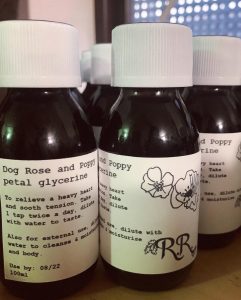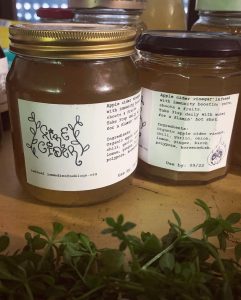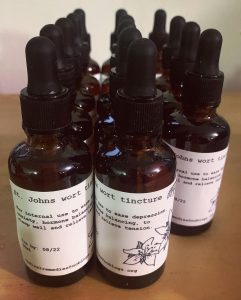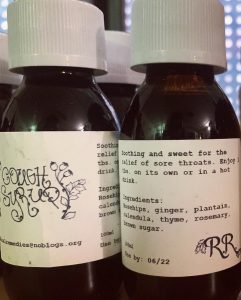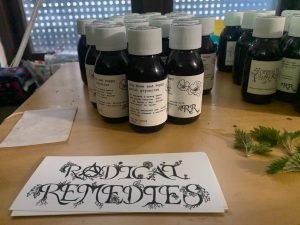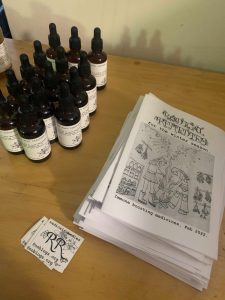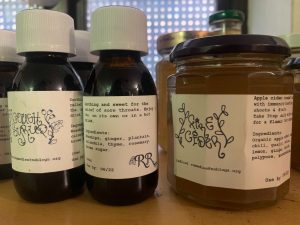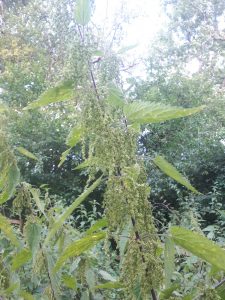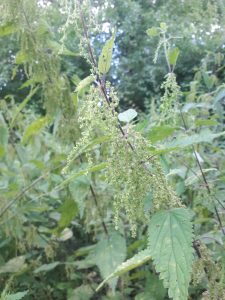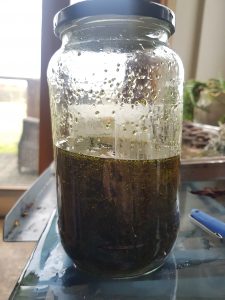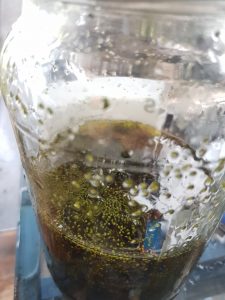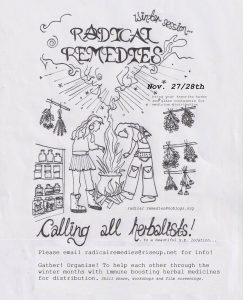Thank you to everyone who came to the winter warmer weekender!! <3 <3
It was magical. We had such a lovely time sharing knowledge, relaxing, watching films, tasting herbs, foraging and medicine making!
Our rough plan was to make 4 winter remedies to help support immunity through the winter months, for distribution with Pie & Mash and other collectives providing solidarity and support through the colder months. We wanted to incorporate what could be seasonally, locally foraged or sourced or from what we already had. We came up with 4 preliminary ideas, subject to change as other herbalists joined the potion making session!
- Cough syrup (Rosehips, Thyme, Plantain, Ginger)
- Cough and sore throat tea (Mullein root, Dandelion root, Plantain, Mallow root, Liquorice)
- Warming balm for achy joints and muscles (Nettle seed oil, St. John’s wort oil, Lavender, Rosemary oil, Calendula oil)
- Fire cider (Ginger, Chili, Garlic, Horseradish, Birch Polypore mushroom, Lemon, Turmeric)
On the Saturday everyone arrived bright and early for a cuppa, introductions and a browse at the herby books and zines, then we wrapped up warm for a wintery forage!
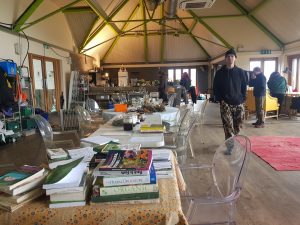
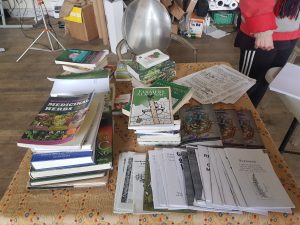


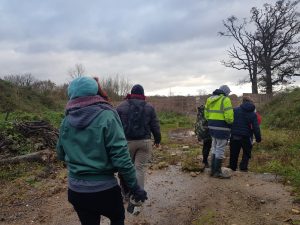
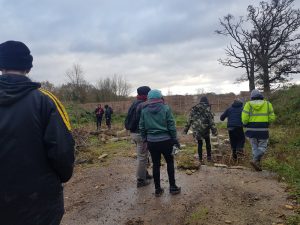
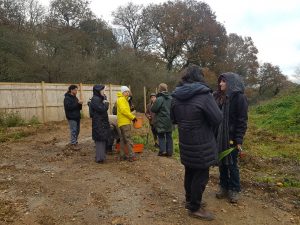

We were hunting for the ruby red gems that line the hedgerows at this time of year, the potent and powerful fruits of the Wild Dog Rose (Rosa canina); Rosehips. Fruiting from the start of Autumn but best harvested after the first frost, these little fruits are gifted to us as medicine when the winter begins to creep in and our immunity becomes compromised. Packed full of nutrients to support immune function, our plan was to make a soothing cough syrup with them, perfect for this time of year to prevent fevers and colds and sooth the symptoms if they do take hold.
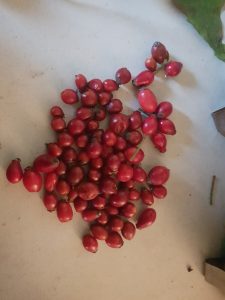
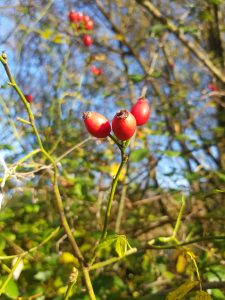
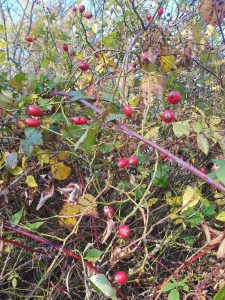
We were also searching below the surface for roots which are storing all the nutrients underground for the plants to use to spring up when the Spring comes. Close to home we had Dandelion (Taraxacum officinale) and Mullein (Verbascum thapsus) roots. Roots of plants are great to forage at this time of year when most growth is slowed down and mostly dormant. However please be conscious when foraging as when roots are removed there is no regrowth of the plants.
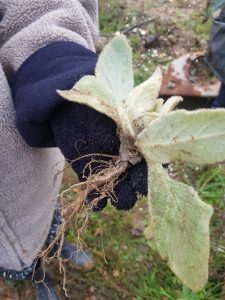
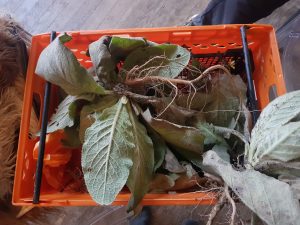


We used both these roots in our tea blend for coughs and sore throats. Mullein’s demulcent quality helps to soothe the raw, irritated respiratory linings that come with flus and colds. It also has expectorant and antiviral properties (White, Foster: 2000). Dandelion root is full vitamins and minerals to help boost a healthy immune system.
We also found some Feverfew (Chrysanthemum parthenium) still in full bloom! Which was a great discovery for some of the foraging folks that suffer from migraines and headaches. Feverfew contains parthenolides that help prevent the constriction of brain arteries (White, Foster: 2000). As well as some Mugwort (Artemisia vulgaris) we were picking mainly for its nervine and mildly psychoactive effects (:

Our favs the wonderful bright Calendula (Calendula officinales) were still somewhat in bloom even into this cold wintery afternoon with their little sunny faces lining the browning and decaying terrain, turning a softer yellow colour as the colder seasons take hold.
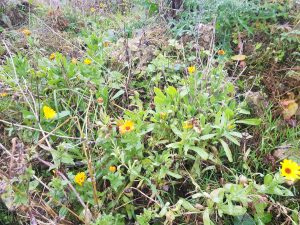
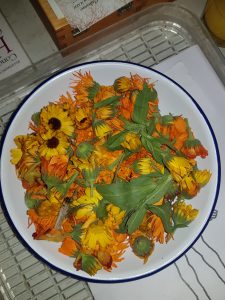
Some of the Calendulas were foraged from our friends Community Apothecary. We wanted to use the Calendulas in the tea for flavour, in the winter warming balm to sooth skin and also used some in the cough syrup….(we love Calendula).
We came back inside to warm up and hide from the incoming storm! We had a herb tasting session. Hot infusions of lavender, calendula and mugwort discussing their flavours, constitutions and our preferences. We ate some amazing wintery soup lovingly prepared by a couple of caring comrades and soon were snuggled up with fully belly’s watching a film screening of Juliette of the Herbs.

We arose, a little weary eyed for another brisk morning walk, this time into the woods for some mushroom hunting!
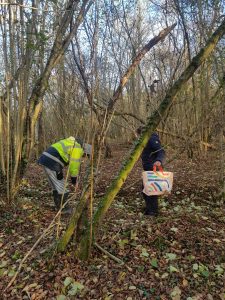
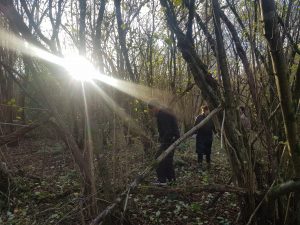
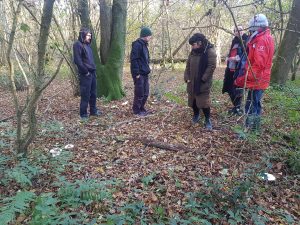
One of the best finds where the Trooping Funnel or Monk’s Head (Infundibulicybe geotropa), identifiable due to its creamy white colour, gill formation underneath, funnel like shape and importantly its protruding umbo (small lump) in the centre. They grow mostly in woodland in ring formation hence the name trooping and can grow up to 20cm wide in diameter. They are very tasty! Fry well for a crispy tasty mushroom you can have on toast or add to risotto!

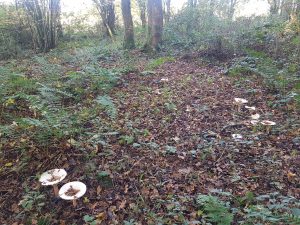
We came across some delicious Wood Sorrel (Oxalis Acetosella), with beautiful flowers come Spring and trefoil leaves.
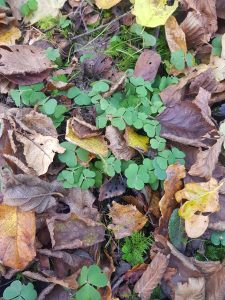
Some Hedgehog fungus (Hydnum Repandum)…
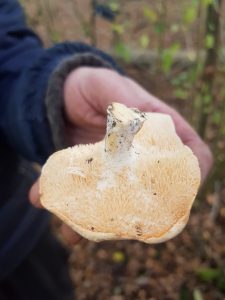
And we found Birch Polypore mushrooms (Formitopsis betulina) a highly medicinal mushroom which absorbs nutrients from the Birch host tree. We used it in our Fire Cider for its anti-inflammatory, immune boosting properties.
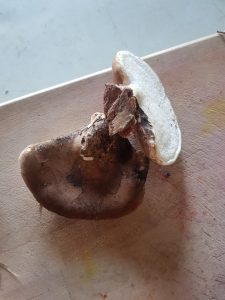
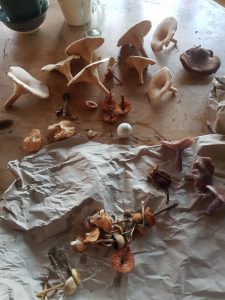
LOTIONS & POTIONS
Cough syrup:
Ingredients
- Rosehips
- Ginger root
- Plantain
- Thyme
- Calendula


Infuse hot water (aprx. 5L) with ginger and rose hips for about an hour simmering away, add the dried plantain, thyme and calendula and infuse for a further 15. Strain organic matter from the liquid using muslin cloth. Add brown sugar at a 2:3 ratio, slowly cook for another hour until colour darkens and liquid just starts to thicken. These timings and measurements are approximations in relation to the amount of herbs we had.
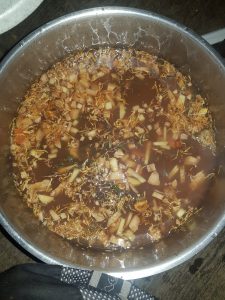
Winter warming balm:
Ingredients
- Shea butter
- Nettle seed oil (Olive oil carrier)
- St. John’s wort oil (Sweet almond oil carrier)
- Rosemary and Calendula oil (Sweet almond oil carrier)
- Lavander
- Black pepper and basil essential oils
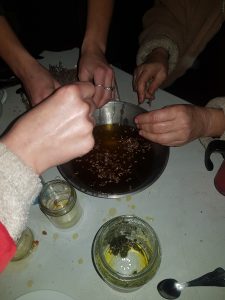
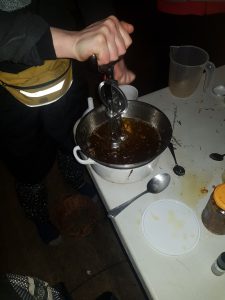
- Melted the shea butter
- Added the infused oils at a ratio of roughly 1:1
- Whisked for 5-10 mins
- Added the lavender petals and essential oils

- Placed mixture into measuring jug and poured into metallic pots
- Left to cool over night
- Popped lids on in the morning and stored in a cool, dry spot.
Fire Cider:
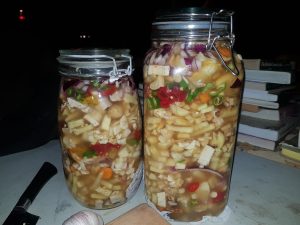
Ingredients
- Apple cider vinegar
- Horseradish
- Ginger root, turmeric root
- Garlic
- Birch polypore mushroom
- Lemon
- Chili (3 types)
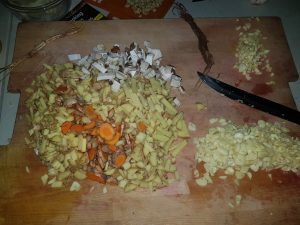
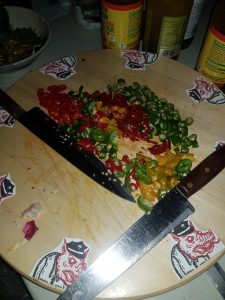
- Chopped all the ingredients
- Placed into large, sanitised kilnder jars
- Leave for 8 weeks to infuse
- We will then drain the liquid and store in jars ready for distribution
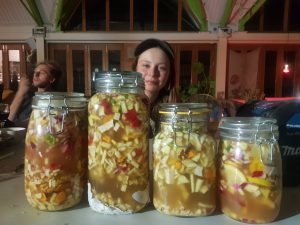
Tea blends:
Dry all herbs in cool dry place or in oven, crush and blend in a bowl or clean surface, store in a air tight jar/tea bags.
Coughs
- Mullein root
- Plantain
- Dandelion root
- Mallow root
- Liquorice
Nervine and calming tea
- Skull cap
- Rose petal
- Calendula
- Passion flower
- Lavender
- Chamomile
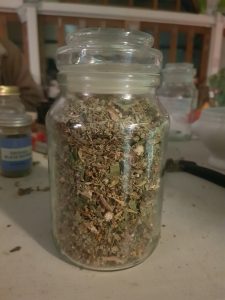
The Herbal Drugstore, 2000, White and Foster.



